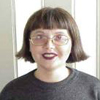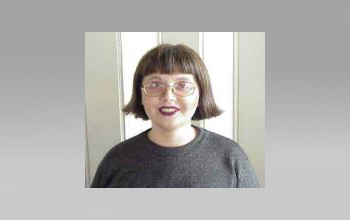WORLD OF ART
Laboratorium of Curatorial Practices
Season 10: 2006/07
Seminar – Workshop No.5
April 13th and 14th
Project room SCCA, Metelkova 6, Ljubljana
Deadline for submitting applications: April 6, 2007
Public lecture: Curator as a Translator
April 12th at 8 pm
Project room SCCA, Metelkova 6, Ljubljana
13.04. (Friday)
10.00 -11.30 Introductory lecture
A Voice of One’s Own: catalogue text as an example of performative writing
Catalogue text is a piece of interdisciplinary and performative writing. Most importantly each exhibition has a certain concept that needs to be clarified with the catalogue essay. However, there are other requirements that a thorough catalogue essay needs to fulfil. On the one hand, many relevant data need to be clearly presented throughout the text so often takes a long research to collect and select the necessary information. On the other hand, the catalogue text is a text after all so each writer has to find his/her own voice through the process of writing.
Therefore the writing of the catalogue text happens by a performative entanglement of these three radically different aspects: the extrapolation of the concept, collecting and analysis of necessary information (about the works, or issues related to the exhibition) and the personal quest for one’s own unique voice (of the writer/curator).
Theoretical concepts, literature and certain creative writing methods can help the writer in finding the appropriate writing approach for each exhibition and catalogue text. However, I want to argue that the catalogue text is a unique genre that is neither only theoretical text, nor just another literature genre. It is also far from pure description or retrieval of the artistic concepts and expressions. Therefore even though it is open to experiments and variability there are certain specific rules of this genre and only by following these rules it can justify its existence.
12.00-13.30
Sub-genres of Catalogue Texts
The already existing different exhibition models (individual, monographic, retrospective, thematic, historicised, or biennial international exhibitions), as well as the recent development of different exhibition models (on-line, collaborative, participatory, etc.) require re-thinking of the genre itself.
The main questions of this session are how should one adapt and change the writing methods, forms, vocabulary, etc., when writing different texts and how this affects “one’s own voice.”
13.30 – 15.00
Break
15.00 – 15.30
Preparation of the close reading workshop
Organisation of the order of reading of different textual samples, forming groups of participants according to the chosen texts, etc.
15.30 – 17.30
Close reading workshop
The questions that in the previous session had been tackled generally and theoretically during this session will be exemplified on some samples of the proposed texts. The texts for the session of close reading will be available to the participants in advance and they are asked to choose one text each for the close reading session.
Samples of catalogue texts available for reading and selection:
- Marina Abramovic, Oxford: Museum of Modern Art – Oxford, 1995 (monographic exhibition).
- Archipelago, Stockholm: Cultural Capital of Europe, 1998 (group international project).
- Manifesta 2 and 4, Luxembourg, 1998 and Frankfurt, 2002 (International Biennial).
- Capital and Gender, Skopje: Museum of the City of Skopje, 2001.
- Eternal Recurrence 4, Skopje: Press to Exit project space, 2006 (individual project).
- Interrupted Histories, Ljubljana: Moderna Galerija, 2006 (research project and exhibition).
- Correspondences, IFA – Berlin, Bonne, Stuttgart, 2001 (curatorial exhibition).
18.00-19.00
Q/A session about the assignment: Discussion about the specific issues related to the writing of the text required for the last day of the workshop.
14.04 (Saturday)
- 10.00 – 14.00 Presentation of the written texts
- 14.00 – 15.30 Break
- 15.30 – 17.30 Division in groups and discussion of the written texts
- 17.30 – 19.00 Groups get together and present their remarks and conclusions
General requirements:
With each application the candidates should submit a CV with bibliography, a motivation letter, an older written and/or published text and an idea (abstract of 150 words) of what they would write and present in the workshop.
Preparation:
All participants should get familiar with all catalogues (available at SCCA library) and should select at least one text each for discussion during the session of close reading. In addition, a week before the commencement of the course the selected participants are going to be invited to discuss the workshop structure in order to enrich its content and facilitate its success.
The applications and supporting materials send to: svetumetnosti@scca-ljubljana.si
Suggested literature:
- Kemal, Salim and Ivan Gaskell. Eds. The Language of Art History. Cambridge, UK: Cambridge University Press, 1991.
- Austin. J.L., How to do things with Words. Ed. by J. O. Urmson and Marina Sbisa. Second Edition. Cambridge, MA: Harvard University Press, 1999.
- Wollheim, Richard. Art and its Objects Second edition. Cambridge, UK: Cambridge University Press, 1980
 Suzana Milevska (1961)
Suzana Milevska (1961)
Visual culture theorist and curator and currently works as a Director and Lecturer in Visual Culture at the Visual and Cultural Research Centre “Euro-Balkan” Institute in Skopje. She received her PhD at the Visual Culture Department at Goldsmiths College in London. In 2004 she was a Fulbright Senior Research Scholar at Library of Congress and she also received P. Getty Curatorial Research Fellowship (2001) and ArtsLink Grant (1999). Since 1992 she curated over 70 art projects in Skopje, Istanbul, Stockholm, Berlin, Bonn, Stuttgart, Leipzig, etc. She was one of the curators of the Cosmopolis Balkan Biennial in Thessalonica (2004) and of the International Biennale of Contemporary Art 2005 – National Gallery in Prague. Her publications include “From a Bat’s Point of View” in Eduardo Kac, edited by Peter Tomaz Dobrila and Aleksandra Kostić (Maribor, 2000), 47-58; Capital and Gender, edited by Suzana Milevska (Skopje, 2001); “The Readymade and the Question of Fabrication of Objects and Subjects” in Primary Documents – A Sourcebook for Eastern and Central European Art since the 1950s (New York, 2002), 182-191; “The portrait of an artist as a young ‘strategic essentialist’” in Tanja Ostojić – Strategies of Success / Curators Series 2001-2003, (Belgrade, 2004), 33-43; “Curatorial Labyrinths in Macedonia”, Men in Black – Handbook of Curatorial Practice, Ed. Christoph Tannert/Ute Tischchler, Kűnstlerhaus Bethanien (Berlin, 2004). “Hesitations, or About Political and Cultural Territories” in Cultural Territories, edited by Barbara Steiner, Julia Schäfer and Ilina Koralova (Köln, 2005), 31-43; “Is Balkan Art History Global” in Is Art History Global, edited by James Elkins, (New York, 2006), “Resistance that Cannot Be Recognised as Such – interview with Gayatri C. Spivak” in New Feminism: worlds of feminism, queer and networking conditions, Löcker Verlag (Vienna, in print).
